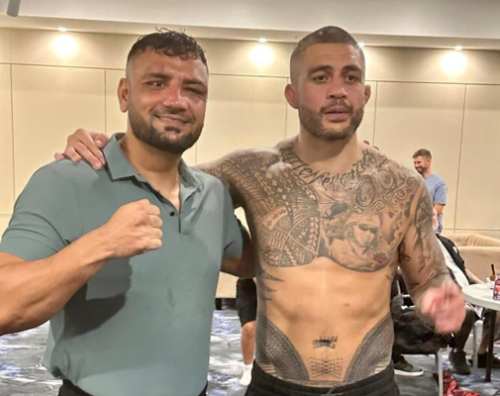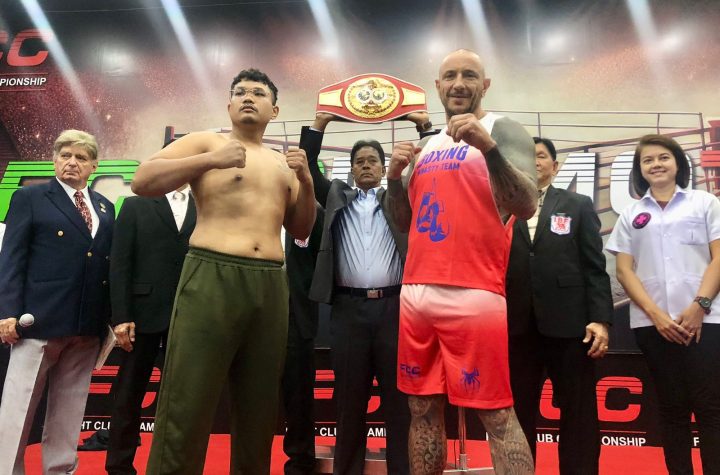
A replay of the finish between Jeremy Stephens and Josh Emmett has been played over and over again since their main event fight Saturday night at UFC on FOX 28.
Despite views from multiple angles, slow motion, super slow motion and everything else in between, fans and media still cannot agree on whether or not Stephens’ knee during that sequence hit a grounded Emmett’s head, barely grazed him or missed altogether.
Dan Miragliotta, the referee for the contest, was tasked with making a call on whether it was a legal or an illegal knee in real time. It happened in a flash and seconds later Stephens was finishing the fight in earnest with legal elbows to Emmett’s head.
“This is absolutely the toughest part about what we do,” referee Rob Hinds told MMA Fighting about a referee’s job in the cage. “With seconds we have to decide was that legal, was that illegal? Do I do something, do I not do something? Do I verbally warn, do I not? So, within that split, split second, there’s several things that can happen.”
Miragliotta did not call it an illegal knee and Stephens went on to win via knockout. The Florida State Boxing Commission does not allow for instant replay, so the ref couldn’t go back and look at that either, to confirm or deny his decision though everyone at home and in the arena were doing so.
Stephens’ knee did appear to at least graze Emmett’s head and it made contact certainly on the back swing. Hinds said that if a referee is in that kind of a situation, where he or she feels like something could be a foul, the protocol is to either give a verbal warning or stop the action to have the ringside physician check on the apparently fouled party, if necessary. Hinds said pausing the fight at that point is “the best step.” Perhaps Miragliotta could have taken a point if he felt it was a damaging enough blow, too.
“If it was glancing or not, it’s still illegal,” said Hinds, who is a licensed referee certification trainer. “At that point, it’s up to the referee to handle that in an appropriate way. If it’s just a verbal warning, ‘Hey, watch the grounded opponent.’ Is it something where we’ll stop and check on this fighter to see if they’re injured by it, what the status is of it, that sort of thing. There are different levels of procedure that we can do. But if you feel as a referee that something happened and you do nothing, that’s the worst.”
There’s also no reason for Florida not to give referees the ability to use replay, Hinds said. Last year, the Association of Boxing Commissions and Combative Sports (ABC) passed a regulation saying every commission under its oversight should give the referee’s the benefit of replay if there was a potential foul during a fight-ending sequence.
Hinds, who is on the ABC’s rules and regulations committee, said Stephens vs. Emmett would be Exhibit A as to the reasons why there should be replay. Miragliotta could have consulted the video to determine whether to keep the fight a TKO, rule it a no-contest if it was indeed an illegal knee, or even disqualify Stephens if he felt it was an intentional foul.
“I don’t know how it would have worked out in the end, but the fact that you would be able to look at it and evaluate those things is very important,” Hinds said. … “That’s exactly the reason why we implemented replay, exactly for that kind of situation.”
Another talked-about issue in the Stephens vs. Emmett bout was the elbows Stephens seemed to land to the back of Emmett’s head just before the potentially illegal knee. Blows to the back of the head are illegal in MMA. However, Hinds said after watching the replay of the fight that Emmett was moving and Stephens did not see to be targeting that area, so they were not illegal.
“It was definitely transitional,” Hinds said. “With those elbows, there’s really not a problem. Here’s what most of us explain to the fighters: If you throw an elbow — and an elbow is long, an elbow is your forearm and that other stuff. If you throw a strike and it hits in an illegal area, but it also hits in a legal area, it’s considered legal.
“That’s why we always say if you catch a part of the ear, you’re good. If you hit behind the ear, that’s when it’s considered illegal.”
A lot if it comes down to what part of the body the fighter is targeting, Hinds said.
“All transitional strikes are considered legal,” he said. “The fact that Emmett was moving, it may have a bearing for a verbal warning, ‘hey, watch the back of the head.’ But at that point, we always tell the fighters, if you go to punch or elbow your opponent and they turn their head and you hit them in the back of the head, we’re not counting that against you, because it was transitional. They caused that target. But we may warn you just not to come back with a secondary shot in that area.”
Hinds said this situation furthers the point that the entire ABC should adopt the changes to the Unified Rules made in 2016, including replay. Florida has adopted the new rules (excluding replay), but many prominent commissions have not, including Nevada, New Jersey and Texas. The fact that there are two separate rulesets regarding the definition of a grounded fighter may have confused Stephens, though Emmett would have been considered grounded under any of the used rulesets, old or new.
“The main point here should be that this is the exact reason for replay and more importantly for all athletic commissions and tribes to adopt the current Unified Rules and regulations,” Hinds said.




